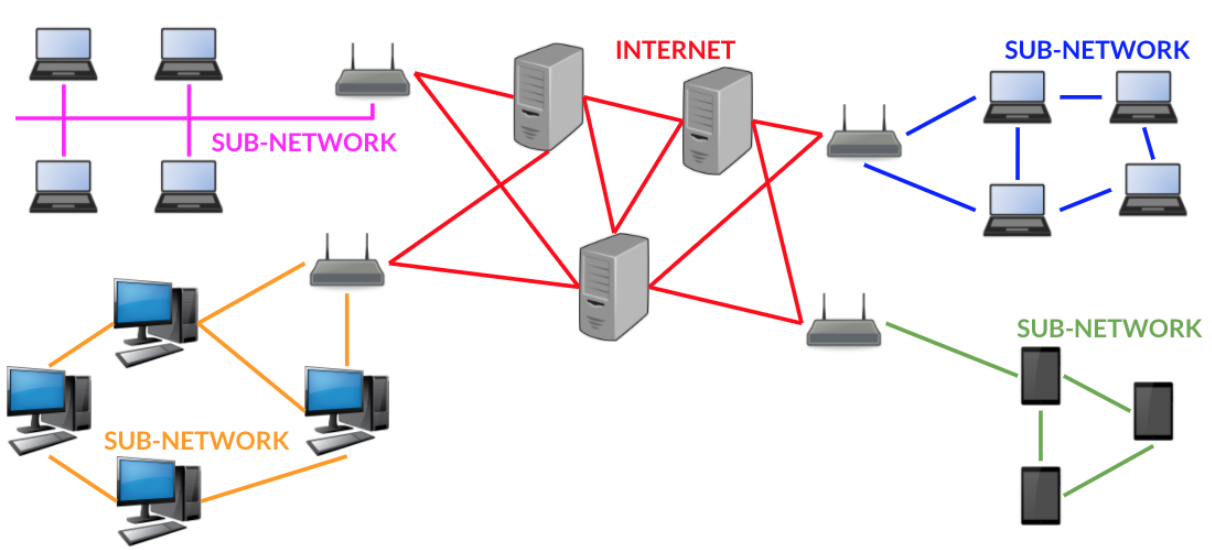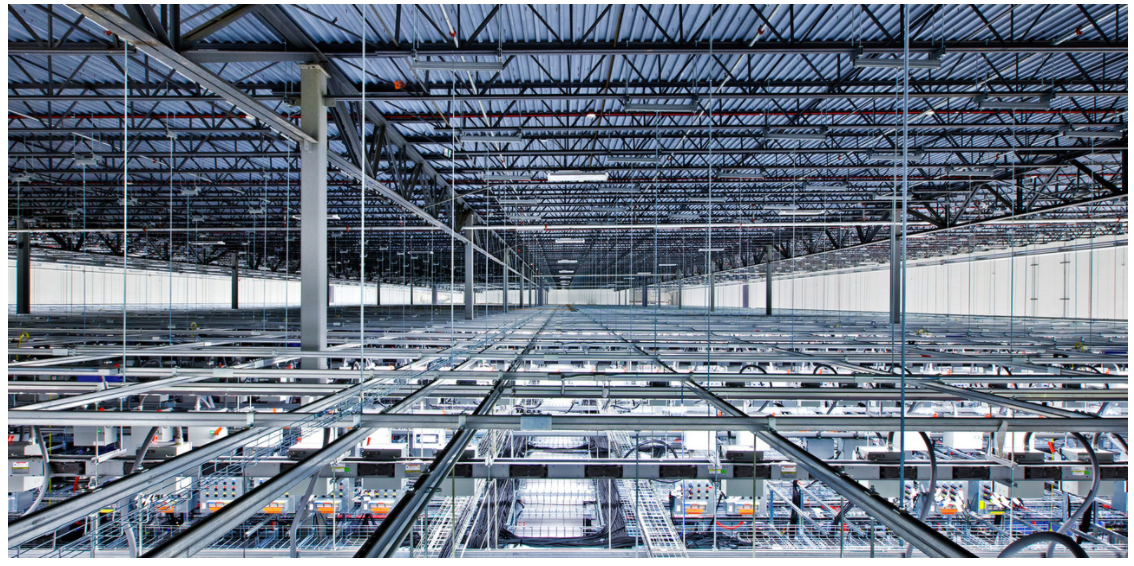What is the Internet?
Inside the internet - Lesson 2
Objectives
- To understand how data travels around the Internet
- To know how internet servers are connected
- To know and explain the job that routers do in the Internet
Lesson Resources
- Lesson slides
- Internet Use Homework Sheet
- Large sheets of paper/card
- Sticky tape
- Ball of string
Lesson 1 - What is a network?
Lesson 2 - What is the Internet?
Lesson 3 - What is HTML?
Lesson 4 - Remixing the web
Lesson 5 - HTML and CSS
Lesson 6 - More HTML and CSS tinkering
Introduction
Some content in this lesson has been adapted from Creative Commons resources at code-it.co.uk, credit to Phil Bagge.
Pre Lesson Preparation - It is easier to do this lesson in a classroom (i.e not an ICT suite)
Recap the last lesson where you role played and drew the school network. Ask the class - what is a network? What were some of the key parts of equipment in the networks we drew?
Explain that in this lesson we are going to look at the bigger network that is the Internet and recreate how we and our family and friends use the Internet.
The Internet and the Web
Ask - What is the difference between the Internet and the world wide web?
A computer network is a group of computers which are connected together to allow communication and shared services between them.
The Internet is an international network of computers connected together with copper cables, optical fibres and satellites.

The World Wide Web is more commonly known as the web, it’s just one of the services that use the Internet network. World Wide Web is abbreviated to www when we use a web browser.
The web is made up of documents and media stored on servers all around the world. We view them via a web browser like Chrome, Safari, Edge or Firefox.

Other systems that use the internet are:
- electronic mail (for sending messages);
- broadcasting (e.g. streaming multimedia content like TV shows;)
- social networking (with: friends, family and people with similar interests).
What does your family use the internet for? Explore some of the questions (and their answers) from their returned homework sheets.
An Internet Service Provider (ISP) is a company that lets you connect to the Internet via their system. They may filter unsuitable content or limit how much data can be sent at once (the bandwidth). A wireless (WiFi) connection lets devices access the Internet connect without having to be plugged into a connection socket. This means that they can be moved around easily without lots of wires getting in the way. A wireless router is usually used to transmit internet data via radio signals to nearby computers so they can go online. The Internet is useful because it:
- is always up to date;
- can be accessed across the world;
- allows multimedia to be shared quickly;
- contains a huge range of information;
- lets people contact each other easily.
Some people worry that a hacker could illegally access their computer using the Internet and steal personal files and information from it. A firewall is a program that allows you to access the Internet but prevents other users of the Internet from accessing your computer.
Ask the class - What do you know about staying safe when you’re using the Internet?
How does the Internet connect us?
Look at the Prezi - Network of Networks or Network of Networks V2 to investigate how all web services are connected. This sheet accompanies the first Prezi to give some more detailed explanation of each part.
Start at the home and the network that might be in a common home. How does the user’s device (PC, iPad etc) actually connect to a website like www.google.co.uk?
Look at the journey of data from device to router, from home router to ISP routers and then how that connects out to the rest of the internet and then to Internet servers of companies like Google. Explain that diagram is simplified as this web service may be in another country and need to be routed along lots of wires via lots of routers.
How is data sent over the Internet?
Show the video ‘There and Back Again: A Packet's Tale. How Does the Internet Work?’. (Google Drive version if Youtube is not accessible in your school).
Data that needs to be sent over a network is split up into small chunks called packets. The transmitting computer adds extra information to each packet, including its: source address, destination address and packet number (so packets can be reassembled in the correct order).

Routers
On the Internet, devices called routers identify the destination each packet of data is being sent to and choose the shortest or quietest route to send the packet down to get it closer to its destination. A set of packets may be routed along different paths if there is congestion or if a router breaks.

IP address
Every Internet connected device on the Internet uses a unique set of numbers called an IP (Internet Protocol) address to identify it. Also, the computers all use a common language called TCP/IP to communicate with each other and understand the data being sent (TCP stands for Transmission Control Protocol).Packets of data will sometimes be given a set time to live (TTL). This means that the number of routers they can hop over is limited before they are then destroyed. The Internet does this so that data which can’t reach its destination doesn’t clog up the network.
You can find out your own IP address at http://www.yougetsignal.com/what-is-my-ip-address/
Servers

In the last lesson we talked about the job our school server does, but there are other types of servers.
“A server is a computer that provides data to other computers. It may serve data to systems on a local area network (LAN) or a wide area network (WAN) over the Internet.
Many types of servers exist, including web servers, mail servers, and file servers. Each type runs software specific to the purpose of the server.”
These brilliant photos show inside Google’s data storage centres and give an idea of the scale of their servers. This is where the store all the data of their users from websites, Gmail accounts, Google Drive, Google Play, Youtube and all the other apps they have:


(Source: https://www.google.co.uk/about/datacenters/)
This video explains it all nicely and you can walk around for yourself in Google Streetview here.
Main task
Split the pupils into groups of roughly three. Give out a country to each group (see teacher slides). Hand out a large sheet of paper to each group.
On their sheet they should add:
- A house and a simple home network within it showing some of the devices that may be used and how they connect (router, computer, tablet, consoles etc)
- An Internet Service Provider(s) ( Virgin, BT, Sky etc)
- A school and a simple network within it (server, ICT suite computers, tablets, office machines)
- A business and a simple network within it (they could choose the type of business, what sort of devices might they have, why would they need to connect to the internet?)
- Internet services (e.g. Youtube) hosted in that country on servers (see teacher slides)
If they can, they should add to their sheet cabled connections as solid lines and wireless connections as dotted lines (between routers and devices).
As you work with pupils make sure you explain that the routers need to connect to each other so data can be routed to the right service. Note where some services are located in the class so you can use these to demonstrate routing and connecting.
Near the end of the task Lay the sheets out on the floor in rough geographical order (as you’d see on a world map, i.e USA on the left, China on the right etc) on the floor and gather the class around. Lay out string between all the countries and explain about fibre optic cables being laid across the sea bed or between regions and countries. Take a look at this animation (Google Drive version here) that shows all the major undersea Internet cables in the world and has some interesting stats to go with it.
Ask them to explain and connect up (with string) how a user in one country might connect to a web service in another country. Explain how the system has redundancy built in, in case a cable breaks so data can often be routed another way, so in theory the entire Internet should never be able to be put out of use by cables breaking or being destroyed.
Plenary
Assess the student understanding by asking the class
- So what is the internet?
- How is it different to the world wide web?
- What different kinds of devices can access the Internet?
- What sorts of services can we access via the Internet?
- Is the Internet a good thing? (they can refer to their homework sheets for this.)
